
This assessment determines student understanding of the standard.
- Subject:
- Mathematics
- Material Type:
- Assessment
- Provider:
- Howard County Public Schools
- Date Added:
- 03/10/2017

This assessment determines student understanding of the standard.
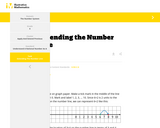
For this task, students describe the location of a given equation on a number line.

This parent guide supports parents in helping their child at home with the 6th grade Math content.

This resource accompanies our Rethink 6th Grade Math course. It includes ideas for use, ways to support exceptional children, ways to extend learning, digital resources and tools, tips for supporting English Language Learners and students with visual and hearing impairments. There are also ideas for offline learning.
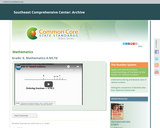
The Common Core State Standards (CCSS) videos are designed to support states, schools, and teachers in the implementation of selected math standards. Each video is an audiovisual resource that focuses on one or more specific standards through examples and illustrations geared to enhancing understanding. The intent of each content-focused video is to clarify the meaning of the individual standard rather than to be a guide on how to teach each standard, although the examples can be adapted for instructional use.

Students use the scientific method to determine the effect of control surfaces on a paper glider. They construct paper airplanes (model gliders) and test their performance to determine the base characteristics of the planes. Then they change one of the control surfaces and compare the results to their base glider in order to determine the cause and effect relationship of the control surfaces.

This book introduces students to some of the most unusual places in our galaxy outside of our solar system. Answering the question, "How many stars are in the sky?" introduces students to basic counting, tallying, and grouping techniques, as well as allowing for the use of simple proportions.

This short video and interactive assessment activity is designed to teach fifth graders about the conversion of fractions to decimals.
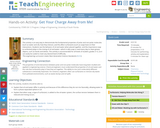
This activity is an easy way to demonstrate the fundamental properties of polar and non-polar molecules (such as water and oil), how they interact, and the affect surfactants (such as soap) have on their interactions. Students see the behavior of oil and water when placed together, and the importance soap (a surfactant) plays in the mixing of oil and water which is why soap is used every day to clean greasy objects, such as hands and dishes. This activity is recommended for all levels of student, grades 3-12, as it can easily be scaled to meet any desired level of difficulty.

Students will extend the number line (both horizontally and vertically) to include the opposites of whole numbers. The number line serves as a model to relate integers and other rational numbers to statements of order in real-world contexts.
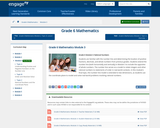
Students are familiar with the number line and determining the location of positive fractions, decimals, and whole numbers from previous grades.
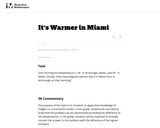
The purpose of this task is for students to apply their knowledge of integers in a real-world context.
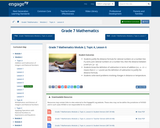
In this lesson, students justify the distance formula for rational numbers on a number line: If p and q are rational numbers on a number line, then the distance between p and q is |p – q|. Students know the definition of subtraction in terms of addition (i.e., a – b = c means that b + c = a) and use the definition of subtraction to justify the distance formula. Students solve word problems involving changes in distance or temperature.

In this interactive, use logic to solve riddles involving a wallaby jumping contest. Then, place each contestant’s jump—a fraction, mixed number, or decimal between –5 and +5—at the correct point on the number line. Backward jumps are represented by negative numbers and forward jumps by positive numbers. Numbers are randomized so that riddles can be solved and wallabies placed on the number line multiple times. The accompanying classroom activity includes a fraction/decimal concept review and a response sheet to accompany the online work.
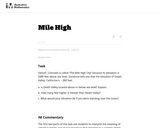
The first two parts of this task ask students to interpret the meaning of signed numbers and reason based on that meaning in a context where the meaning of zero is already given by convention.
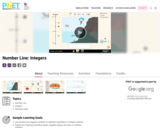
Sample Learning Goals
Use positive and negative numbers to represent quantities in multiple contexts.
Explain the meaning of positive values, negative values, and zero, in multiple contexts.
Describe the location of a point on a number line with respect to another number.
Describe the location of a point on a number line with respect to its opposite
Define the absolute value of a number as its distance from zero.
Interpret inequality statements as statements about the relative position of two integers on a number line diagram.
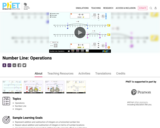
Sample Learning Goals
Represent addition and subtraction of integers on a horizontal number line
Reason about addition and subtraction of integers in terms of number-locations
Use logical necessity to reason that addition has the opposite effect as subtraction or that adding (or subtracting) a negative integer has the opposite effect as adding (or subtracting) a positive integer.
Recognize and generate equivalence classes of integer sums and differences
Show that a number and its additive inverse (opposite) have a sum of 0
Using a net worth context, describe situations that have a positive sum or difference, negative sum or difference, and zero sum or difference
View adding a negative as equivalent to subtracting a positive, and explain why this relationship makes sense in contexts such as net worth.
View subtracting a negative as equivalent to adding a positive, and explain why this relationship makes sense in contexts such as net worth.
Apply a number line model for addition and subtraction to new contexts.

For this interactive, students select the correct symbol for each equation.

For this interactive, students compare integers and select the appropriate response to each question.

For this interactive, students determine the value shown.